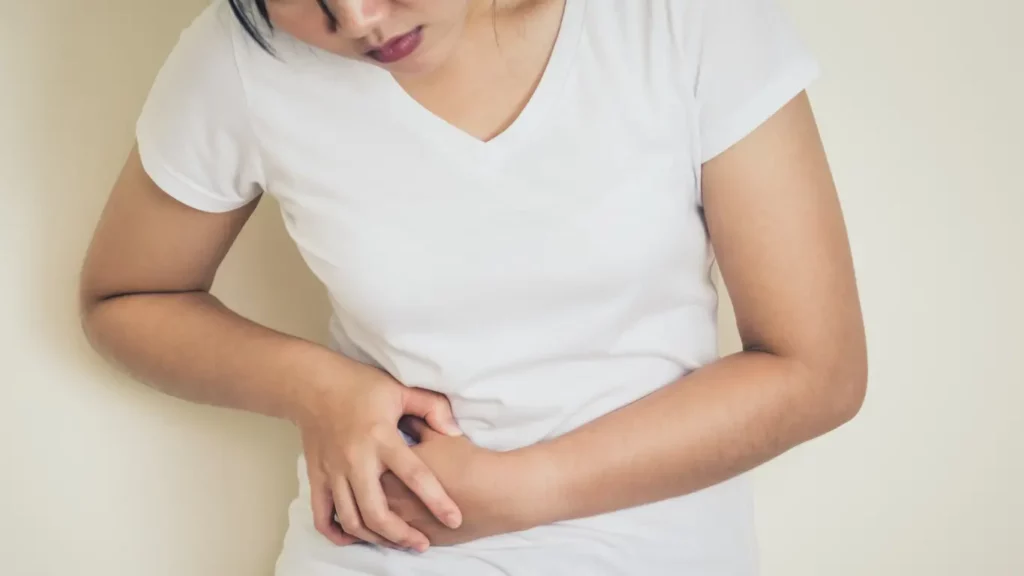10 Early Symptoms of Liver Disease in Woman

The liver is a vital organ responsible for various functions in our body, including detoxification, digestion, and nutrient storage. Liver diseases can affect anyone, but some symptoms of liver disease may be more common in women. In this article, we will explore the ten early symptoms of liver disease that woman should be aware of to ensure timely detection and treatment.
What is Liver Disease?
Liver disease encompasses a wide range of conditions that can damage the liver, such as hepatitis, cirrhosis, fatty liver disease, and liver cancer. These conditions can develop due to various factors, including viral infections, alcohol consumption, and genetics.
Read Also: How to Make Your Liver Healthy Again
10 Early Symptoms of Liver Disease in Woman
Jaundice
- Jaundice is a yellowing of the skin and the whites of the eyes. It occurs when the liver cannot process bilirubin properly. This is one of the most common signs of liver disease.
Fatigue
- Unexplained fatigue is a symptom that often accompanies liver problems. Women with liver disease may experience extreme tiredness, even after a good night’s sleep.
Abdominal Pain
- Persistent pain in the upper right abdomen can be a sign of liver trouble. It can range from a dull ache to sharp, stabbing pain.
Unexplained Weight Loss
- Sudden and unintentional weight loss can be an early indicator of liver disease. This is especially concerning if there have been no changes in diet or exercise.
Changes in Urine and Stool
- Dark urine and pale-coloured stool may suggest liver dysfunction. Changes in the colour of bodily waste can be a sign that the liver is not processing bilirubin properly.
Nausea and Vomiting
- Frequent nausea and vomiting can be associated with liver issues, as the liver plays a role in digestion.
Swelling in the Abdomen
- Liver disease can lead to abdominal swelling, which is often due to a build-up of fluids in the abdominal cavity (ascites).
Itchy Skin
- Pruritus, or itchy skin, is another common symptom of liver disease. It can be quite bothersome and affect a woman’s quality of life.
Dark Colored Urine
- Dark-colored urine can be a sign of liver problems, indicating that bilirubin is not being processed correctly.
Pale Colored Stool
- A stool that is unusually light or clay-coloured may indicate liver disease.
Risk Factors for Liver Disease
Some women may be at a higher risk of developing liver disease due to factors such as excessive alcohol consumption, viral hepatitis infections, obesity, and a family history of liver conditions.
Read Also: Top 10 Signs You Should Never Ignore: Where Liver Pain Strikes
Importance of Detection: Early Symptoms of Liver Disease in Woman
Early detection of liver disease is crucial for effective treatment. The liver is a resilient organ, and with early intervention, it can often recover from damage. Delayed diagnosis can lead to severe complications.
Read Also: How to Check Liver Function at Home in Simple Steps
Conclusion
In conclusion, women should be aware of the early symptoms of liver disease to ensure timely diagnosis and treatment. Liver disease can be managed effectively when detected early, improving the quality of life for those affected.
Furthermore, understanding that liver disease can manifest differently in women compared to men is crucial. Women should pay close attention to their bodies and seek medical advice if any of the aforementioned symptoms are experienced.
In summary, women’s health and well-being are greatly enhanced by being aware of the early signs of liver disease and taking action when needed. With the right knowledge and proactive healthcare measures, women can effectively address liver issues and lead healthier, happier lives.
FAQs on Early Symptoms of Liver Disease in Woman
The outcome depends on the specific condition and early detection. Some liver diseases can be effectively managed with treatment, while others may require ongoing care.
Some liver diseases have a genetic component and can run in families. It’s essential to be aware of your family history and discuss it with your healthcare provider.
Maintaining a healthy diet, regular exercise, limiting alcohol intake, and avoiding behaviors that could lead to hepatitis infections can reduce the risk of liver disease.
Both genders can develop liver disease, but certain symptoms may be more prevalent in one gender. It’s crucial for everyone to be aware of the signs and symptoms.
Yes, some liver diseases can progress without noticeable symptoms. Regular check-ups and screenings can aid in early detection.

